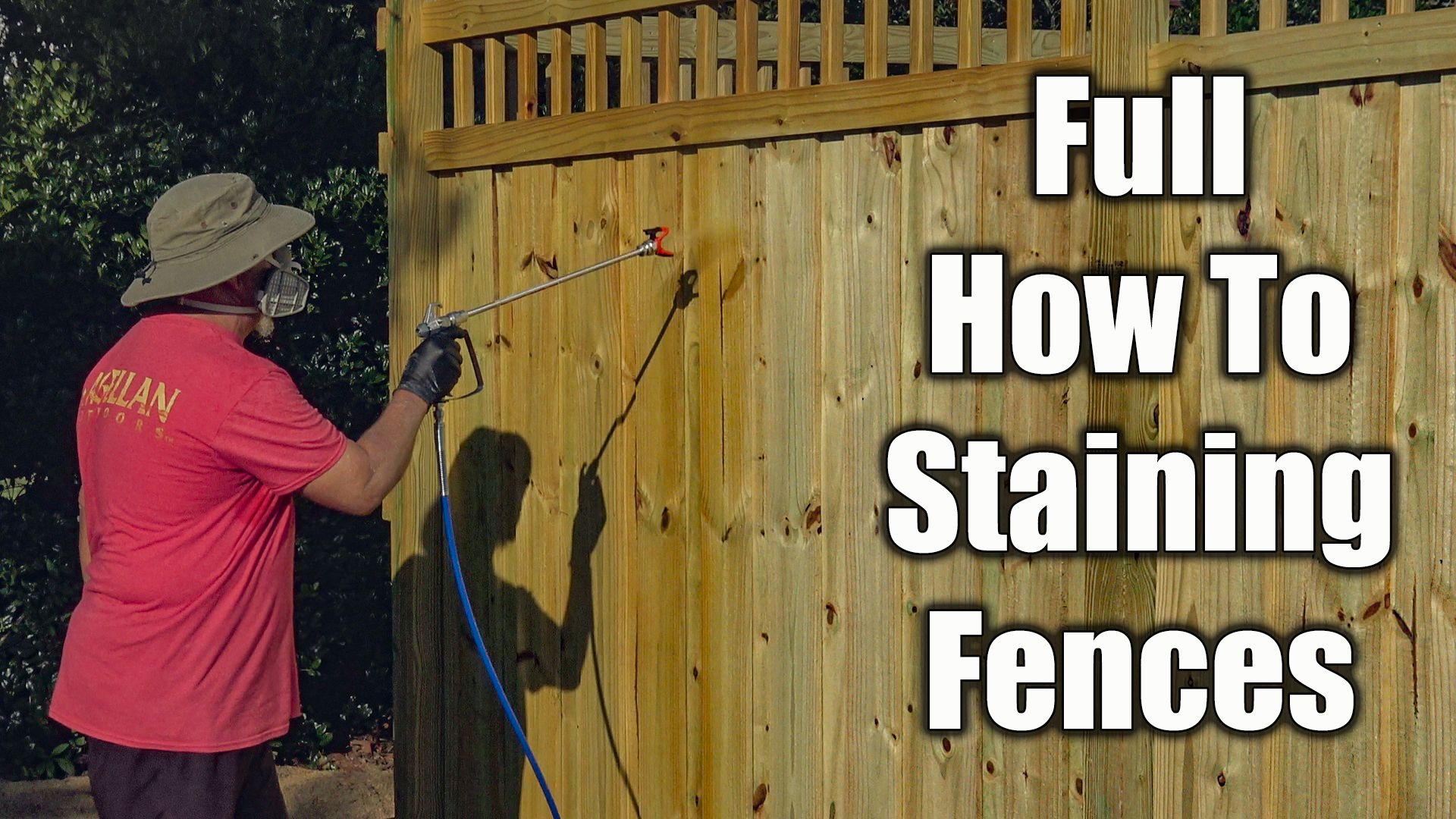How to Stain a Fence
Doc stains the new wood fence with stain using an airless sprayer. Staining a fence is hard work, but not that hard to do if you understand a little of the science behind the wood and the stain. When staining a fence you must understand how the moisture content of wood impacts the stain, and the difference between oil based stains, water stains, and hybrid stains.
Staining a Fence Video
Fence Staining Products
Doc uses the sprayer below to stain the fence.
CLICK IT for pricing.
20″ ext wand for sprayer
To see full list of stains click the link below.
To see the EXACT stain Doc is using, click the can.
50 foot ext hose
Gasket Safe Glasses
Click the link below
N95 Respirators
Click the link below to see the list.
Staining Fences and Decks Myths
An EXCELLENT write up from Warline Painting in Canada
Myth Number 1 – Pressure treated wood needs to breathe for at least three months before it is stained
How many times have you heard this? It’s advice given all over the internet. The staff in Home Depot say it all the time. And it’s wrong. The truth is as soon as the wood is dry enough, it is ready to be stained. There is no waiting period for today’s pressure treated wood to let chemicals leach out. Waiting too long to stain and protect your deck means the wood loses more of its ability let the stain adhere. That means you will have more steps in prepping the deck for staining.
The exception to this is wood that comes pre-treated with a wax finish or sealer. In that case you are going to need to follow the instructions by the company treating the wood.
Myth Number 2 – New wood is ready to be stained
You have a brand new deck built. It looks gorgeous. The moisture content is at 15%. The only thing left is to apply your stain. Right? Not so fast. I learned a fancy new term at this course – mill glaze. Mill glaze happens during the milling process and it refers to the shine that can occur on the planed surfaces of wood. It’s caused by the combination of the heat and pressure against the wood.
It’s pretty easy to test if you have mill glaze. Just place a few drops of water on the surface of the wood. If the water beads and resists soaking into the wood, you probably have mill glaze. A light sanding will remove this or using a neutralizer will remove mill glaze.
Myth Number 3 – You have to use an oil stain to get the best finish
This is old school thinking and I’m sure there are still plenty of painters and carpenters that will tell you that oil is best. Not today. The developments in waterborne technologies have produced a number stain products that are outperforming traditional oil stains. Benjamin Moore’s line of Arborcoat offers aklyd/acrylic emulsions as well as 100% acrylic coatings. They also provide the added advantages of being easy to apply, easy to clean up and being easy on the environment.
So there you go. Three myths about decks that will put you on the right track for getting the best possible finish on your deck.







